At the highest altitudes, surrounded by snow and cold live the snow elves, also known as the white elves for the colour of their hair and their typical fair skin. They have lived in the upper regions of the Albine mountains for millenia, since they were separated from their elven relatives to the south-east when the first humans occupied the Kallian Plains.
But how do these elves survived in those cold regions?, well, thanks to their genious and magical power. They mostly inhabit on settlements built on big caves during winter where thanks to magic, specially their
Artificial Suns they managed to create a micro climate where they can cultivate plants, breed their cattle, and only in Spring and Summer they do descend to the lower part of the mountains to their Summer villages. There, they produce their harvest and, when it is harvested, some of it goes to the granaries in the Cave settlements for the winter in case they need it.
But don't underestimate these elves by where they live, they are very cultivated and civilized and their cave settlements have all the commodities of the civilized life and despite their disparce settlement their cities are also densely populated. . They've a rich written and oral tradition, in fact, the land of the Snow elves is also known to the rest of the elves as the "Land of the Bards" or
"Andor na Barthayn" in classical elvish.
The Snow elves are also great warriors, some say that they're the bravest among the elves!. Experts in close combat and masters of the spear and the sword, archery doesn't play an important role in their armies (at least if they're fighting inside a tunnel or a cave!. Their reputation as warriors is so great that many snow elves have been recruited to
serve in the Ikarian armies and later on in the armies of its successor states.
For centuries they were vassals of the Ikarian Empire helping in the defense of the frontiers against their common enemy, the Barbarians to the north and the east, mainly the Crorai and the Nords. They were they who also helped Afranius, one of the sons of the last Ikarian Emperor, to defeat the barbarians and stablish the Kingdom of Cloudia.
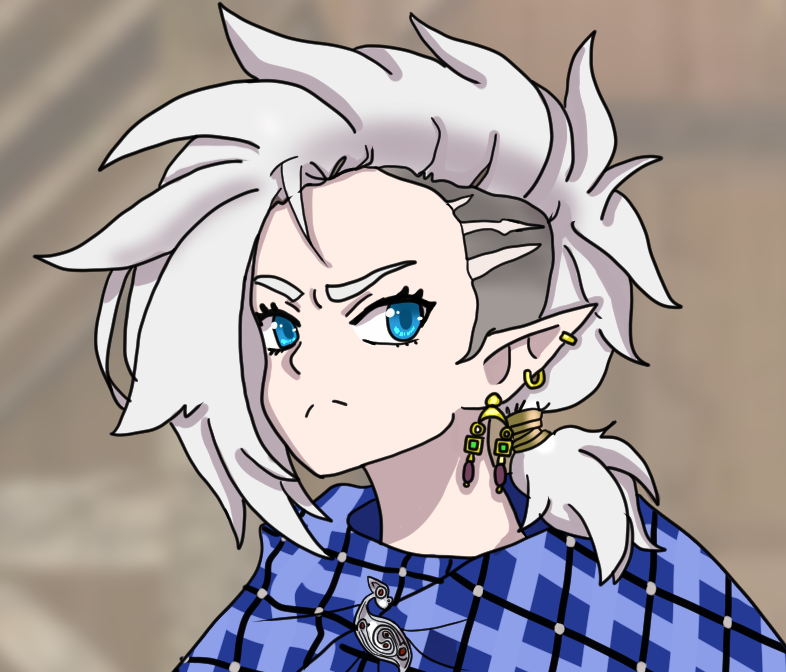
by Callyxtus
Snow elves have generally whiter skin than the rest of their relatives, and they also have a lighter hair color than the rest of the ethnic groups. Generally this is grayish or white (and sometimes dark or blonde) and their eyes usually green or blue but you can also find Snow elves with dark or light brown eyes. They are shorter than their relatives from the south of the continent but remain slender and graceful.
Snow Elves as well as their other elven brothers are regarded as one of the most cultured nations on Yeia. Every elf knows how to read and write, something uncommon in most of the human societies. They are also very fond of epic tales narrating the deeds or their ancestors, their gods, and the previous kings. Due to this passion for culture its not strange to find libraries in these cave cities.
The culture of the Snow elves despite being at its core very similar to other elven nations has been influenced significantly by the culture of the Ikarians/Blatians to the South due to their kingdom being a vassal state of the Empire (and at times even a province of it) for most of its history. So much has been the influence of the old Empire upon the northernmost elves that some consider their realm as another successor of the
Ikarian Empire. Many Snow elf youths travel south to Imperial Lands to trade or to serve in the imperial armies and, either settle in the Empire or return to their cave settlements wealthy and respected by their community now that they have acquired Ikarian/Blatian citizenship.
Land of bards, heroes and songs
The lands of the elves north of the Imperial lands are regarded as the land of songs, harps and bards. Snow elves have cultivated this tradition of epic poetry (and poetry in general) since probably the times of the Heroes, where this type of poetry flourished. And they don't sing only about their own heroes and past, but also, because of the aforementioned influence of the Ikarian Empire and culture and the fact that some of them were and still are citizens of the Empire because of their services to it, about Emperors and Heroes from the Empire of the Ikarians. For example some poems were composed shortly after news of the Fall of Ikaria reached the Elven north, where many felt a terrible sorrow for the fall of their human allies and friends as well as their fellow countrymen that defended the capital alongside the last Ikarian Emperor as part of his personal guard.
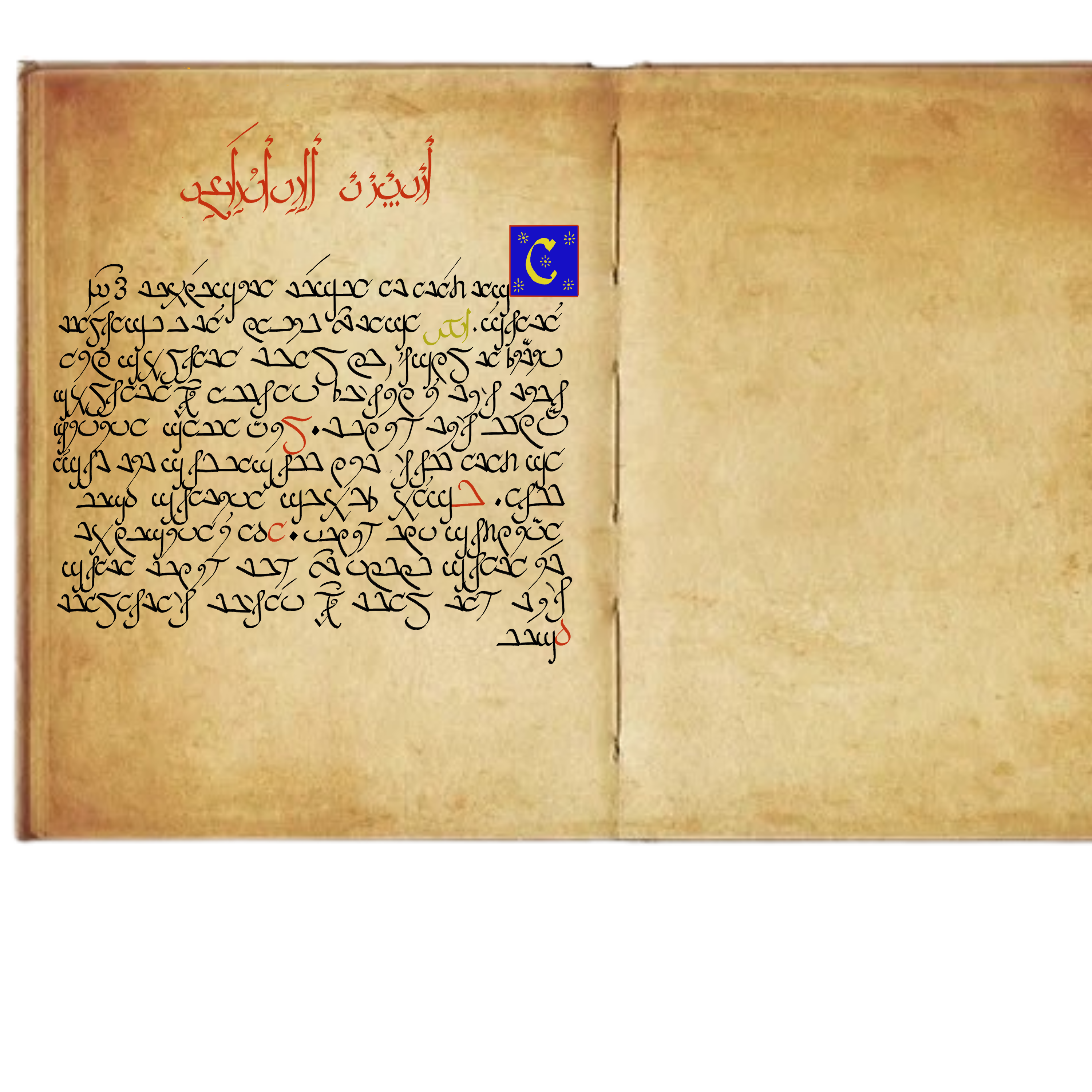
Chronicle of the Snow Elf Kings by Callyxtus
Others composed songs and epic tales about the clash between snow elves and Blatians against the barbarians both to the west and to the north.
Foreign perception
Snow elves are perceived by many of their neighbours as a peculiar type of elves. Though very proud and civilized, Snow elves are also regarded at the same time as the most warlike and tough of all elves. In contrast with the other Elven Kingdoms to the South and to the East which have more "complex" systems of government and societies, Snow elves are seen as more "tribal" in the sense that theirs is more like the elven states of old, where the elves had a high king but then were divided in tribes due to geography or ethnicity. In terms of style of fighting and behaviour in combat some southerners believe that they are closer to their Nord enemies to the north than their cousins south of the
Blatian Empire.
Major language groups and dialects
Snow elves usually speak the Snow elf dialect of the elvish language, which has some influences from the Blatian and Ikarian languages, although talking with the Blatians they can use both the Ikarian language or Common Elvish, the latter, also known as Classical Elvish is the official language, and the language of culture of the kingdom and it is also the language employed to communicate with other elven ethnicities.
Shared customary codes and values
Snow elves put an strong emphasis on family and community life. Their families are the basic social element in the Snow elvish world followed by their community, either their neighbours or their fellow citizens, if they live in a city.
Snow elves are very hospitable with foreigners, if they came on peacefully terms, they'd offen offer the foreigner to enter their homes, take a hot bath, eat and drink, after the proper presentations. In exchange snow elves expect the same treatment if they ever visit their guest's home, as they consider hospitality as one of the fundamental ethics of their society.
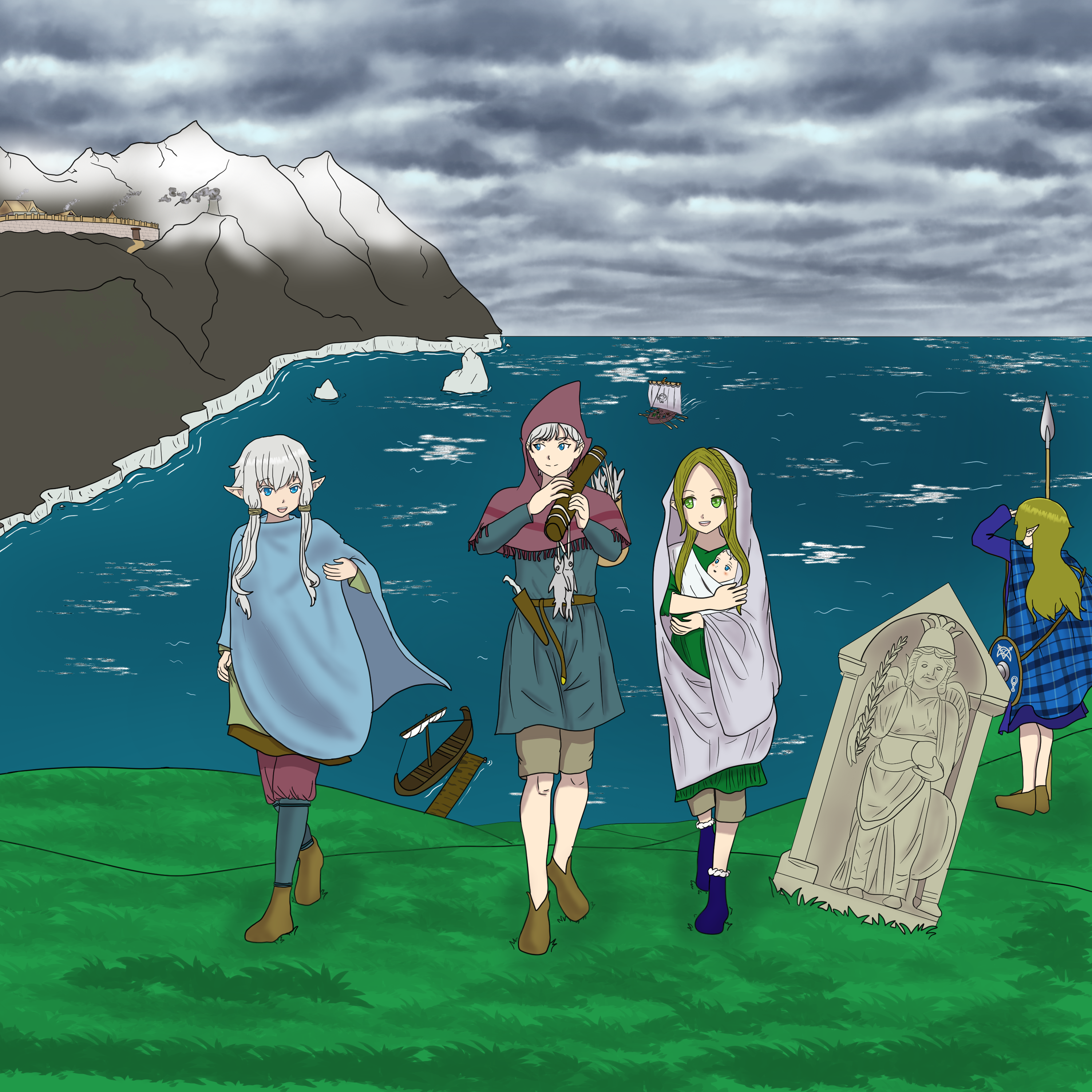
by Callyxtus
They are also relatively pacifist and only go to war if their homes and realm are in danger, or if their help is requested by a friendly nation or if the forces of evil and dark magic threat the existance of the light magic users, despite this, men and women constantly train themselves in the art of war. Talking about magic, this is essential to the life of the Snow elves, without it, they couldn't survive in this dangerous climate. Thanks to it they can grow their food, and keep themselves warm, they see it as gift of the gods and because of that they have to thank them for that, worshiping them, offering sacrifices in form of usually liquid libations and doing good deeds to others.
Average technological level

Mattyn and wizzard making the Artificial Sun work by Callyxtus
Snow elves have reached an advanced level of technology thanks to the use of magic for survival and taking advantage of what nature provides to them, even using thermal energy from the lower layers of the earth.
Worth mentioning is, of course,their most famous techonology that they refuse to share with anyone, including their elven brethren in the south; the
Artificial Sun that allows them to live warmly inside their cave settlements.
Common Dress code
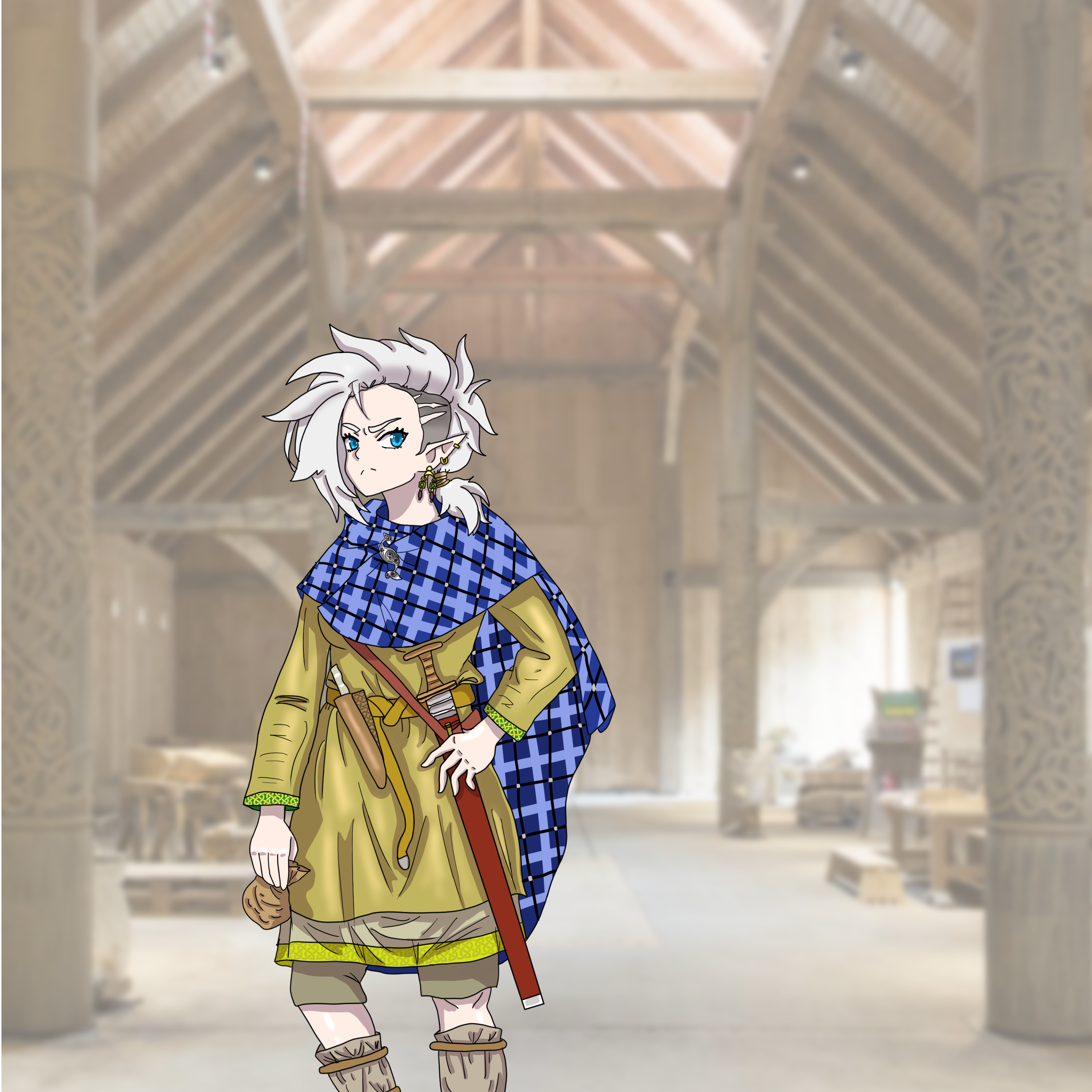
by Callyxtus
The dress code of the Snow elves changes depending on the season. During most of the autumn and the entirety of Winter, they usually wear clothes made of fur and wool. Sometimes they also wear caps made of bear skin. This special cap, has an interesting background. In order to hunt a bear, which is not usually done, because for them bears are sacred animals, protectors of the goddess of nature, they have to ask the goddess for her permission, as without this cap, they problably couldn't be as worm as they are with it so they have to hunt the bear, so, they kill the bear as a matter of survival. Usually caps made of this material are also done for children as they are the less resistant to cold. But Snow elves would never kill a bear cub for it.
Their boots are also made of leather or wool. But they can also wear shoes made of wood. The word for this shoes is of Ikarian origin (Tsokos or Tsokas) , as the elves copied the design from them.
During the warm months their fashion resembles the fashion of the populations of the Blatian Empire and many snow elves like to dress in proper
Blatian fashion .
Another distinctive feature of their fashion are their chequered patterned cloaks. Each city and tribe has it's own design and pattern and they are a a source of pride. It is said that all the Snow elves know the different patterns of all the Snow Elf cities in order to identify people from other places. This style of cloak design or better said decoration was also copied by many Blatian humans living in the regions close to the Kingdom of the Snow Elves.

by Callyxtus
Art & Architecture
Wood and stone are the most common materials used in Snow elven architecture. Stone is specially used because it keep the houses warm in winter and fresh during summer, and because living inside gigantic caves, stone is everywhere.
As with all the elves, they are famous for their excellent craftsmanship, fabricating beautifully decorated objects made of gold, silver, amber and even animal bones.
Common Customs, traditions and rituals
The traditions and customs observed among the Snow Elves has something to do with the importance of hospitality that we've talked about. They usually would exchange the so called "items of hospitality", which are little animals or hands made of terracotta that have the names of both the guest and the host inscribed on it and a sacred oath remembering this hospitality and to agree to do the same in case the old host visit the former guest's house.
Snow elves, as well as their other elven brothers worship the Sacred Trees, but due to the fact that they live in city caves for most of the winter, they cannot celebrate the festivals of the sacred trees that happened during winter, so, they celebrate both the winter and summer festivals of the Sacred trees during the latter season.
There are also singing and music competitions during Summer and one of the most famous entertainment for the snow elves ( and of all the elves in general) is theatre, either in the open or in close buildings dedicated to to hold theatrical plays to be perfomed.
Birth & Baptismal Rites
Once a baby is born, a flower is put over the house's main door, symbolizing the happiness of the parents and family. Two months after the birth, the baby elf is given a ritual bath ( in many elven nations the bath is done differently and has different meanings). In this case, the baby is bathed in cold water, symbolizing the climate that he's going to live in and how strong it has to be in order to survive it.
Inmidiately after this ritual bath another ceremony is performed that is also common among the other elven races, that is called "The Connection". In this ceremony a fern leaf is passed over the head and face of the baby and then it is given to him. All of this simbolizes his/her connection with nature and the magical forces that are part of it that would be present during the rest of his life.
Coming of Age Rites
Usually when an elf comes of age a family banquet is held at the house and the boy or girl does its first sacrifice, usually a libation of milk (simbolizing purity). Once this is done he or she is considered as an adult and a full member of the community.
Funerary and Memorial customs
When an elf dies his body is displayed for one or two days in the interior of the house so that the family, friends and neighbours can give the last goodbye and to show respect to the deceased person. Then the body is cremated outside the city and placed on a funeral urn that is then placed in an special place at the house.
It is also customary to compose poems or tales about the deceased person that are sung at the banquet that is held at the end of the day.
Elves of course, believe in the afterlife, they believe that their ancestors go to the palace of the Sky Father and there they live a happy life alongside the gods. But they also believe that they can descend again to earth to look upon their family and give their blessings on special ocassions.

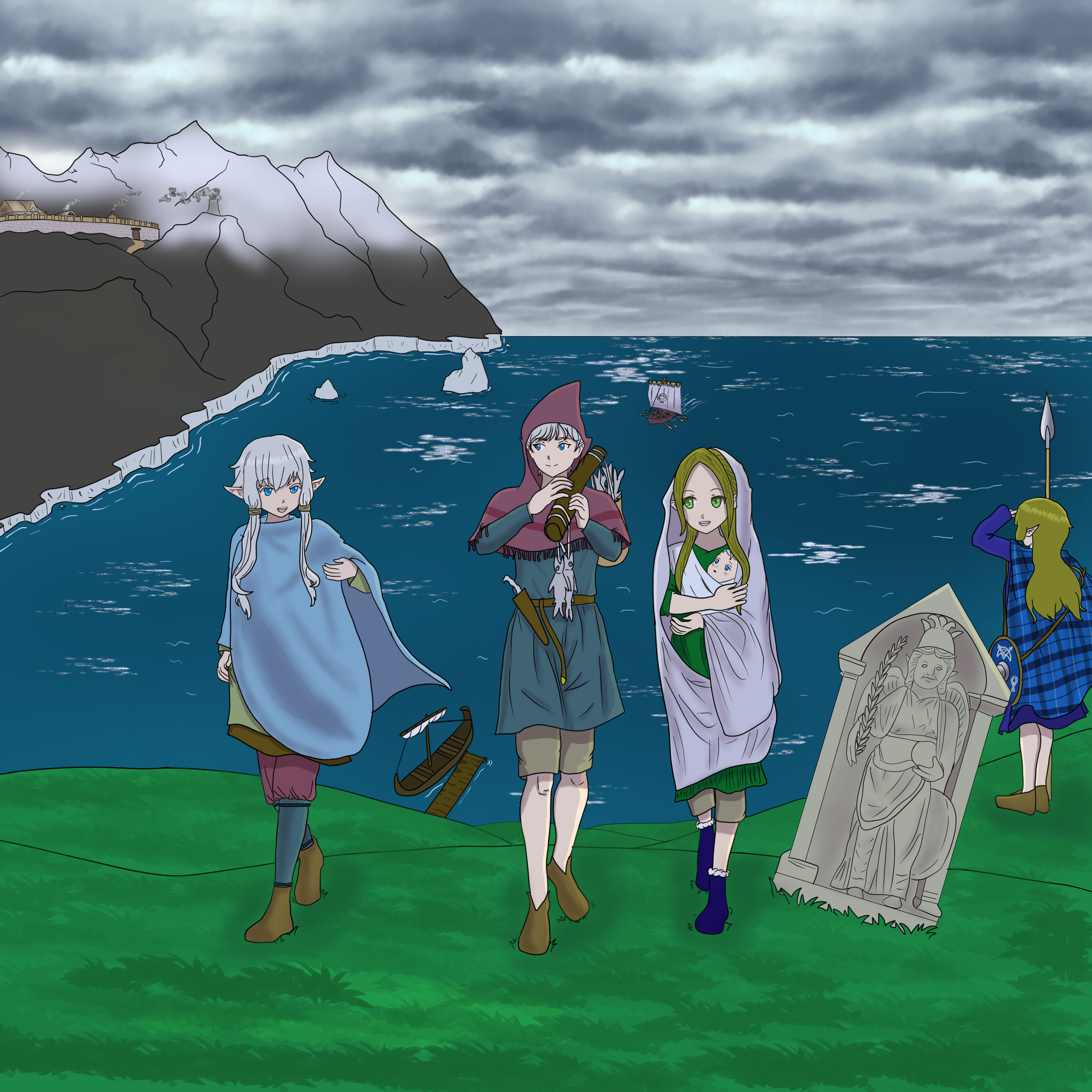










This was a lovely read with so much interesting detail. My favorite part was reading about their traditions and rites. :) Also: the art is gorgeous!
Thank you so much!!. I'm so happy to read that you liked it! It took me a while to rewrite the article as well as doing the art!, it means a lot to me! ^^.